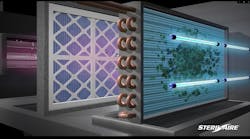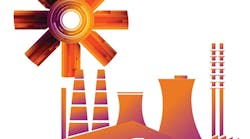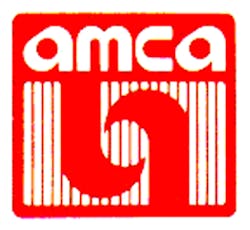For the highest performance and lowest cost of ownership of an industrial fan system, follow these design, installation, and operation and maintenance tips:
Size and design fans to meet all requirements. AMCA’s 800 series of publications walks engineers through the selection process and provides all of the information necessary to specify, procure, and verify the performance of custom-designed heavy-duty fans for industrial-process and power-generation applications.
Perform life-cycle-cost analysis. The cost of a fan often is relatively small compared with the cost of annual operation or the value of the end product or service provided at a facility. Make sure a fan is selected to meet the needs of a process using the least amount of energy and with the highest degree of reliability. Talk with your local utility about energy-efficiency rebates.
Pay special attention to inlet and discharge conditions. Often, fans are installed with accessories such as silencers, dampers, and evases. Define the inlet and outlet planes and who is accounting for the losses associated with these accessories.
Clearly define the density of the gas at the inlet of the fan. Determine what the air-stream density is, rather than have the fan supplier estimate what it will be. Factors include temperature, altitude, humidity, and specific gravity (chemical constituents).
Determine the method of flow control to be used for the fan. Common means of flow control include outlet dampers, inlet box dampers, variable inlet vanes, variable speed or multiple speeds, and blade-angle changes. The advantages and disadvantages of these methods are detailed in the AMCA 800 series of publications.
Minimize system effects. Non-uniform flow has been proven to have negative impacts on fan performance and should be avoided. Further information on system effects can be found in AMCA Publication 201, Fans and Systems.
Extend the service life of your fan. Review your application to ensure your fan is designed with features that will extend its service life. Be aware that some of these features may have significant cost impacts.
Avoid vibration. Vibration has many causes and may shorten the life of a fan. Understand your fan and your foundation support to avoid vibration problems.
Develop a maintenance plan. Develop and document a maintenance plan to avoid unscheduled outages and increase the life and reliability of your fan.
SIDEBAR: Relevant Publications
- AMCA Publication 801, Industrial Process/Power Generation Fans: Specification Guidelines
- AMCA Publication 802, Industrial Process/Power Generation Fans: Establishing Performance Using Laboratory Models
- AMCA Standard 803, Industrial Process/Power Generation Fans: Site Performance Test Standard
All AMCA publications are available at www.amca.org/store.
The Industrial Process and Power Generation Market Group is comprised of engineers and executives from fan manufacturers that are members of Air Movement and Control Association (AMCA) International.











